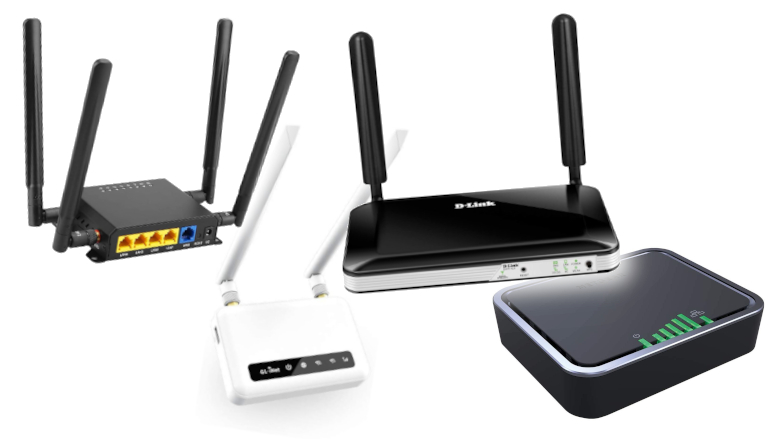
Amazon
If you need Internet access in an area where reliable WiFi isn’t available, then a 4G router might just put an end to your networking woes. Simply pair your LTE router with a data plan from your most reliable local carrier and you’ll have a high-speed Internet connection where there was none before.
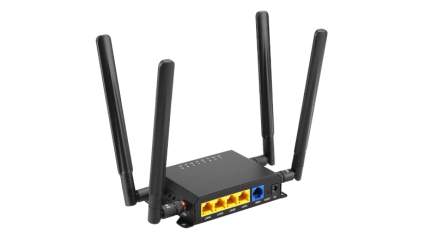
|
Amazon Customer Reviews
|
Price: $209.99 Shop at Amazon | Shop now Read our review |

|
Amazon Customer Reviews
|
Price: $129.00 Shop at Amazon | Shop now Read our review |
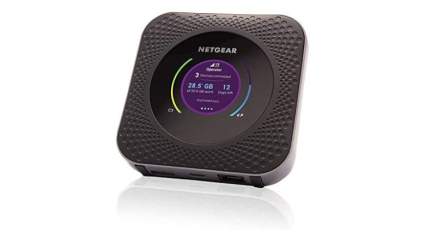
|
Amazon Customer Reviews
|
Price: $195.00 Shop at Amazon | Shop now Read our review |

|
Amazon Customer Reviews
|
Price: $317.99 Shop at Amazon | Shop now Read our review |
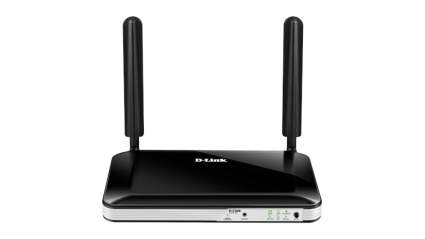
|
Amazon Customer Reviews
|
Price: $122.53 Shop at Amazon | Shop now Read our review |
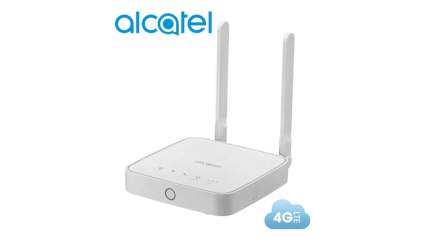
|
Amazon Customer Reviews
|
Price: $69.99 Shop at Amazon | Shop now Read our review |
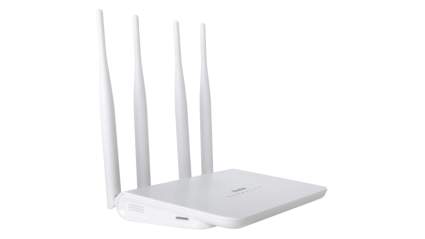
|
Amazon Customer Reviews
|
Price: $69.99 Shop at Amazon | Shop now Read our review |
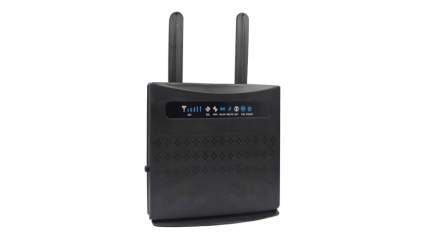
|
Amazon Customer Reviews
|
Price: $99.99 Shop at Amazon | Shop now Read our review |

|
Amazon Customer Reviews
|
Price: $144.95 Shop at Amazon | Shop now Read our review |
-
1. KuWFi WE826-EP06-A Router
Pros:- Supports most GSM carriers
- OpenWRT firmware
- 4 LAN ports + 1 USB port
Cons:- Not compatible with Verizon/Boost/FreedomPop/Sprint
- Setup can be tricky
- Single band wireless
The KuWFi WE826-EP06-A is a highly customizable 4G router that turns almost any 3G/4G data connection into a secure home network. The router is powered by OpenWRT, an open-source firmware that supports almost every networking tool a power user could ask for. It supports VPN, port forwarding, custom DNS, and firewall options, which makes it one of the better options available.
It has four CAT6 ethernet ports for hardwiring computers. It also has an SD card port and a USB 2.0 port for use with file sharing protocols like SAMBA, FTP, and DLNA. As a B/N/G router, it only supports single-band wireless, but you can swap it into bridge mode if you have a better router that you can connect it to.
The only tangible disadvantage to the WE826 is that it is not plug-and-play. You may have to disable the PIN number on your SIM card or even change the APN (access point name) to get Internet access. Thankfully, there are detailed instructions on their Amazon page and they do offer basic product support as well as a warranty. And what’s more, this is something that you will see on almost all 4G routers.
It is possible to get plug-and-play support from carriers like T-Mobile and AT&T but this ultimately depends more on the data plan attached to the SIM card than the router itself.
-
2. GL.iNet GL-X750 4G Router
Pros:- Dual-band wireless
- OpenWRT firmware
- 2 LAN ports + 1 USB port
Cons:- Setup can be tricky
- Only 2 LAN ports
- Only officially supports T-Mobile
The GL.iNet GL-X750 is a flexible networking device that works as either a 4G router, a cable router, or an access point for smartphone tethering. This makes it a useful addition to any home network, regardless of how it accesses the Internet. Of course, in this case, we’re interested in the GL-X750’s ability to broadcast 3G/4G data.
The GL-X750 is an AC dual-band router, which means it can split network traffic across two bands to reduce congestion. Its external antennas help increase its output range as well as its ability to pick up the incoming LTE signal. Another plus is that this router uses the beloved OpenWRT open-source firmware, which supports a full suite of networking features including VPN support, QoS, custom DNS, and more. The downside of this, though, is that setting this router up can be intimidating for those used to a more streamlined setup.
Setup will be easiest if you use a T-Mobile SIM card, as GL.iNet only guarantees this router will work with that carrier (at least in the US). That said, the GL-X750 will technically work with any carrier that operates on the same wireless bands as its EC25-AFFA chip. Other users have reported this working with other carriers in the U.S. and internationally so check the module’s specs before you write off this option.
-
3. Netgear Nighthawk M1 4G Hotspot
Pros:- Works with all SIM cards
- 4x4 MU-MIMO support
- Portable and battery-powered
Cons:- Only 1 LAN port
- Weak internal antenna
- High price tag
While the focus for this article is on stationary 4G routers and not MiFi hotspots, I can’t help but give a special nod to the Netgear Nighthawk M1. That’s because it claims to work with all standard SIM cards. Netgear claims that older SIM cards from Sprint legacy networks and T-Mobile are incompatible but if there is anything I’ve learned about mobile networking, it’s that anything is possible with some tweaking.
Setup is easy thanks to its user-friendly app interface, even though the device doesn’t have as rich of a feature set as a true 4G router. The device also has an onboard 2.4 inch LCD screen to show data caps and concurrent device connections, which is also helpful for users who don’t have an unlimited data plan.
Despite not being a literal 4G router, the Nighthawk M1 is a fairly solid access point for home networking. It supports gigabit LTE despite the fact that these types of data plans are massively expensive and hard to come by. Its processor supports 4×4 MU-MIMO, which creates prioritized channels for the four most-used devices on your network. Again, don’t expect guest networks and firewall support but it will get the job done.
One important thing to note about this device is that since it is a mobile hotspot, it has a compact case and a built-in battery. Not only does this mean you only get one LAN port, but this also means that you have to care for this device as you would any battery-powered device. Yes, you can plug it into a wall adapter but the battery will run hot if you don’t periodically restart this device. (Realistically, that’s good practice to do on any network device, but it is especially important here). That also means no external antennas, so you may to install this device by a window if you only get a weak mobile signal where you live.
Netgear also makes some of the best Gigabit speed routers for cable and fiber Internet users as well.
-
4. Novatel T1114 4G Router
Pros:- Supports home phone service
- Easy setup
- 4 LAN ports
Cons:- Doesn't work with new unlimited data plans
- No external antenna
- High price tag
The Novatel T1114 4G Router is definitely one of the best 4G LTE routers around but because it is exclusively designed for Verizon Broadband plans, it is harder to universally recommend. Still, since Verizon has the largest cell network of the major carriers, we figure the T1114 is worth a mention. It offers both high-speed Internet and voice support, which is great if you still like to keep a home phone line.
This device comes with a SIM card pre-installed but note that Verizon no longer offers unlimited data plans for this device. That said, plenty of users have reported getting around this by inserting a SIM card from a Verizon phone or Jet Pack, though, so it is certainly possible. But even if you can’t find a workaround for unlimited data, the T1114 offers pretty solid performance at 4G speeds (100 Mbps) as long as you get a solid 4G signal indoors.
If you have a weak indoor 4G signal, you may need to install an antenna outside of your house to make the T1114 work. It has two ports to connect external antennas, but sadly none are included in the package. Curiously, it has an internal battery, which means you can take both your home Internet and your home phone line with you when traveling.
The Novatel T1114 has a standard array of four LAN ports so it can still technically function as a home router too. But don’t expect any advanced features such as VPN support or guest networks. All the web UI supports is setting a firewall, enabling manual DNS, and port filtering. So as long as you have a decent Verizon signal in your area and have fairly simple networking needs, the Novatel T1114 is a solid pick.
-
5. D-Link DWR-921 4G Router
Pros:- Supports most GSM carriers
- Easy setup
- 4 LAN ports
Cons:- No USB port
- Single band wireless
- Runs hot
The D-Link DWR-921 might be short on official documentation compared to other options, but the variety of positive reviews on Amazon reveal that this router will work with almost any GSM networks that operate on the 900/1800/2600/800 MHz bands. Simply pop in a compatible SIM card and set the device’s APN and you can share a single 4G LTE signal with up to 16 devices.
The device is only single band wireless but it still delivers a solid data transfer rate at a decent range. It also has four LAN ports for wired connections. You also get a WAN port so you can connect to a modem if you need to use the DWR-921 as a traditional router or a failsafe router. It has a fairly sophisticated router interface that includes support for VPN pass-through, custom DNS, port forwarding, and more.
-
6. Alcatel HH41NH-2BTGMXA-1 4G Router
Pros:- Supports most GSM carriers
- Easy setup
- External antennas
Cons:- Only 1.5 LAN ports
- Single band wireless
- Not compatible with Verizon/Boost/Virgin/Sprint
If you are looking for an affordable 4G router to propagate mobile data from a GSM provider like T-Mobile and AT&T, then the Alcatel HH41NH-2BTGMXA-1 is a solid choice. This compact router supports a wide range of 4G LTE bands, and some users have even got this LTE router to work with CDMA carriers like Verizon despite Alcatel’s claim that it is incompatible. Of course, the results will vary depending on what region of the world you live in.
As long as you are using it with a recommended carrier, the setup for the HH41NH is fairly simple. A typical setup entails plugging in a compatible SIM card and then manually changing the APN. From there, you should be set to connect up to 32 devices to your new home Wi-Fi network. Unfortunately, this is a single-band router so it doesn’t handle heavy traffic well, and it is also lacking a bridge mode to attach your own router. The router is capable of VPN passthrough, MAC filtering, and NAT but it is missing more modern features like guest networking and QoS.
This router has two CAT4 LAN ports, which is nice to see but still leaves it outperformed by more expensive 4G routers. That said, the main appeal of the Alcatel HH41NH is its value price point and it definitely provides some solid bang for your buck.
-
7. Dionlink LT15H 4G Router
Pros:- 2x2 MU-MIMO support
- External antennas
- 2 LAN ports
Cons:- Single band wireless
- Setup can be tricky
- Non-removable antennas
Though the Dionlink LT15H doesn’t offer the same level of name recognition as similar offerings from Netgear and D-Link, this inexpensive 4G router is surprisingly flexible and easy to use. It only supports B/G/N wireless (not AC) but odds are you won’t be getting crazy high speeds from a 4G data plan anyway. The more important factor is that it supports a wide variety of carriers including U.S. Cellular, Cricket Wireless, H2O wireless, Mint Mobile, Lycamobile, MetroPCS, Ting, Telcel, Movistar, Digitel, Claro, Movilnet, and more. The only two it doesn’t support are Verizon and Sprint but even you may be able to pull it off if the SIM cards are pre-activated.
Unless you are using select T-Mobile or AT&T plans, though, the LT15H will require some configuration before you are up and running. This includes setting the APN for the device, which you can typically obtain from your carrier. Once you do get it setup, you can use the web UI to perform basic tasks like changing the network name and port filtering. Unfortunately, this router doesn’t support many advanced features so this is not recommended for power users. Still, it is solid for the price.
-
8. Yeacomm P21 4G Router
Pros:- Easy setup
- External antennas
- 4 LAN ports + 1 USB port
Cons:- Single band wireless
- No VPN support
- Not compatible with Verizon or Sprint
If you get decent GSM signal where you live but don’t have access to high-speed Internet, the Yeacomm P21 may be just what you needed to bring your home network to life. This 4G router is compatible with most every GSM carrier, and despite the manufacturer’s claims otherwise, might even work with select CDMA carriers (like Verizon or Sprint) with some modifications.
Its external antennas are powerful enough to cover a few rooms but realistically you will need to bridge this with a stronger router if you want to provide coverage for a large home. Closer to the router it will still provide data transfer rates up to 150 Mbps. It also has 4 LAN ports to connect wired devices and a USB port for networked media sharing. Setup is fairly simple and only requires setting the APN of the device before you get started. The router has some basic features but won’t match the versatility of competitors using the OpenWRT firmware. Typical users likely won’t even notice a difference aside from the lack of dual-band support.
At the end of the day, whether or not the Yeacomm P21 is right for you depends on your budget for networking equipment and what the wireless landscape looks like where you live so check some Amazon reviews to see how this 4G router might fare for your situation.
-
9. Netgear LB1120 4G Modem
Pros:- Works with all SIM cards
- Gigabit LAN support
- External antenna support
Cons:- Requires a separate router
- Only 1 LAN port
- No included external antenna
Though the Netgear LB1120 is a totally viable way to connect your networked devices to 4G LTE broadband, an important distinction must be made. The Netgear LB1120 is only a 4G modem and does not have a built-in router. So while you could use it to hardwire one device using its built-in LAN/WAN port, you need to connect it to a traditional home router if you want to actually have a wireless signal to connect to.
If you already have a high-powered router (perhaps even a tri-band router or a Wi-Fi 6 router), then you can connect it to your LB1120 to get a home network that will vastly outperform the dedicated 4G modem/routers to which we’re comparing it. But if you don’t have a spare router handy, then you will need to buy one.
As for its performance as a mode, the Netgear LB1120 operates on a wide variety of 3G/4G LTE bands, which means that it will work with T-Mobile, AT&T, and select Verizon plans, depending on where you live. Many smaller carriers are supported too, but some may require unconventional setup methods such as activating the SIM card in a phone first. Its internal antennas aren’t the strongest but the modem supports external antennas like the Netgear 6000450, so this remains a solid option even where your cellular signal is weak.
Netgear also makes one of the best WiFi 6-compatible routers I’ve tried.
How Does a 4G Router Work?
If you are considering using a 4G LTE router for Internet access, then it is important to understand both the features and limitations of these devices before you start seriously shopping for hardware.
Because 4G routers require a stable LTE signal, you can only use them within clear line of sight of a 4G tower. You can easily test this by walking around with a 4G compatible phone, or you can reference these 4G coverage maps provided by Wilson Amplifiers.
If you get a solid 4G signal indoors, then you can start shopping data plans from your preferred mobile carrier. You may have to acquire a physical SIM card, though some 4G routers support embedded eSIM cards that can be programmed digitally. Either way, the SIM card is essential as it acts as a modem for your LTE router.
If you don't get a solid 4G signal indoors but you do get one outdoors, then you may want to consider a cell signal booster kit, which uses an outdoor antenna to bridge the gap.
So while you can't set up a 4G router just anywhere, it can still be a solid choice wherever LTE wireless is available but cable, DSL, or fiber Internet is not.
4G Routers Vs Hotspots Vs Tethering
If you plan to use a 4G router as your primary source of Internet access, then you might also be considering a wireless hotspot or mobile tethering. But while these options are similar in concept, they do not serve the same purpose in practice.
Sure, a mobile hotspot can also use a SIM card to access a 4G data plan, but hotspots are ultimately designed for portable use. That means that they are typically designed for personal use, and therefore, will support fewer concurrent users. Hotspots are also designed to be portable so they will usually have fewer (if any) LAN ports and limited support for advanced networking features. There are exceptions to this, of course, but hotspots, in general, are typically better served for travel than for use as a stationary access point.
Similarly, if you have a mobile phone capable of tethering, you can use this feature to provide 4G data to other devices, albeit a highly limited number. This can save you loads of money because you can use your phone's data plan instead of starting a new one. But the downsides are considerable. Similar to a hotspot, a tethered phone can only support a handful of clients max and will have no inherent support for features like VPN, guest networks, and QoS. Additionally, it will be a constant drain on your phone battery.
Each option has its own applications but a 4G router is definitely the most reliable and cost-effective option for providing full network support to a home or business.